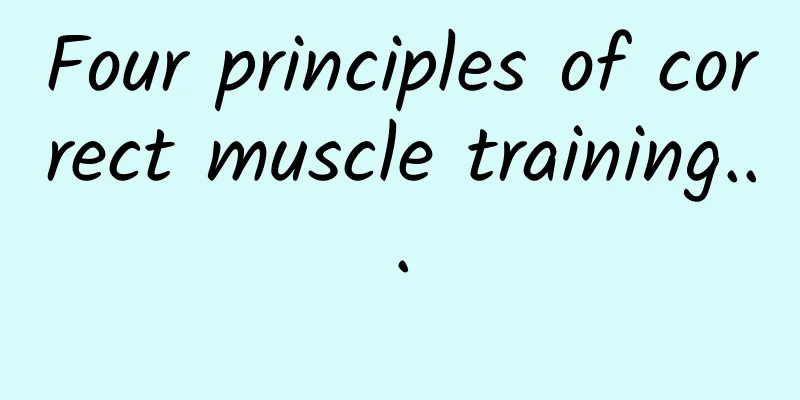Four principles of correct muscle training...

|
Simply put, our musculoskeletal system is made up of various bones connected by muscles and tendons. Therefore, muscle training is very important to avoid injuries to the musculoskeletal system and increase exercise efficiency. Share my four personal principles of muscle building. 1. Comprehensive. Imagine if we only exercise the muscles in the front of the thigh, which are very developed, then the back is relatively weak. This is also not conducive to the stability of the joint. Therefore, we should exercise the front, back, inside and outside muscles around the joint. 2. Painless. Pain is a "feedback protection signal" sent by our body after it is injured. It tells you not to do it again. Of course, "there is no exercise without fatigue." After we do muscle exercise, we may feel soreness and swelling in the muscle belly, such as the thigh and calf, within a day. It is normal for the symptoms to disappear in about two days. However, if there is sharp pain around the joints, especially at the tendon insertion point, and this pain does not disappear within 1-2 days, it is recommended not to do these movements. Whether it is exercise or rehabilitation, we must adhere to the principle of "painlessness". 3. Low intensity. Some exercises may have high benefits, but they also have certain technical requirements and risks. For ordinary sports enthusiasts like us, it is recommended not to do them. For example, squats have certain technical requirements and are suitable for certain groups of people. If you don't do them well, you may get injured. So we should take a step back and do "shallow squats". It’s like we only need to buy a car as a “means of transportation”. Maybe a “sports car” will have better performance, but it is not our goal. Mr. Hou Baolin said, "Just right, leave room for improvement, and rather not go too far than too far." I think it also applies to us, "ordinary sports enthusiasts." 4. Flexibility. Our muscles should be strong and flexible. We don’t want them to be strong sticks, but rather flexible and tensile springs. They can improve the efficiency of exercise and buffer the “impact force” during exercise to avoid injuries to the exercise system. Therefore, in addition to doing muscle "strength training", you should also do muscle "flexibility training" (stretching) at the same time. |
>>: Will the skin rebound after gastrocnemius muscle removal surgery? Will it leave scars?
Recommend
What are neck exercises?
Nowadays, many people have some problems with the...
International Pharmaceutical News丨Oral inactivated vaccine for urinary tract infection? It’s true, but…
The vaccine to prevent " urinary tract infec...
How long should I use a belly band after a cesarean section?
After a cesarean section, many mothers will have ...
B ultrasound showed no fetal heart rate
During the B-ultrasound examination, if no fetal ...
What fruits should I eat for breast hyperplasia? Ladies, please watch this.
Ladies, if you suffer from breast hyperplasia, yo...
Can unobstructed fallopian tubes lead to ectopic pregnancy?
There is no necessary connection between the pate...
Do women have hair down there?
We all know that women generally have pubic hair ...
What are the treatments for postpartum vaginitis?
Women tend to pay more attention to their own hyg...
How long can an egg survive?
The egg is a reproductive cell in the female body...
The wild vegetable season is here again. Poetry and ancient prose will help you appreciate the history of wild vegetable consumption
Spring is the season for all things to grow, and ...
Causes of abdominal aorta pulsation in pregnant women
Many pregnant women will encounter many difficult...
Can pregnant women come into contact with chemotherapy patients?
It is very important for pregnant women to take g...
What should I do if there is no natural gas during the Wuhan epidemic? How can I pay the natural gas bill during the Wuhan epidemic?
What should I do if I run out of gas and owe fees...
How to eat when there is a little blood in the vagina?
In daily life, many women will lack the protectio...
Can I use moxibustion on my abdomen during menstruation?
During menstruation, women have heavy bleeding, s...









